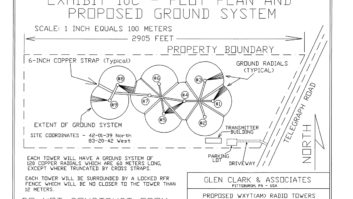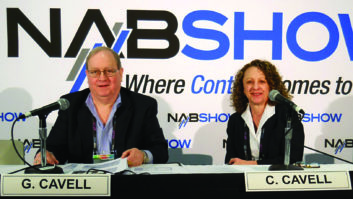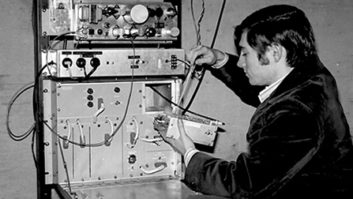I was working as the frequency coordinator of the 2002 Olympic Winter Games when I participated in my first National Radio Systems Committee AM in-band, on-channel conference call. I listened quietly in my office, contributing nothing to the conversation.
My phone would ring frequently with requests for spectrum. Every time I took a call, I put the NRSC sub-committee on hold and each time inadvertently treated them to a medley of Olympic “music-on-hold.”
After realizing my faux pax and overcoming the embarrassment, I continued to listen to the discussion. One of the participants asked about the effects of transmission system reactance on the AM IBOC system. The reply was, “We’re not testing for that right now.” That comment stuck in my mind.
AM is critical
Nine people gave presentations at the IBOC implementation session at this spring’s NAB 2002 convention. Four of them specifically covered directional antenna transmission system bandwidth requirements for AM IBOC.
None of the four presenters agreed on what the bandwidth requirements should be, but they agreed that, because of the orthogonal frequency division multiplexing (OFDM) sidebands, bandwidth requirements are more critical for AM IBOC than for analog AM.
It seems that when you have impedance bandwidth problems with analog AM, you lose the high end of your audio. But when you have the same problem with hybrid-mode AM IBOC, you lose bits and, at some point, the digital signal.
To respond to the commentary, an Ibiquity representative said that the only bandwidth requirement for the hybrid-mode is flat response +/- 5 kHz from carrier. He also said that some directional arrays would have trouble with AM IBOC.
“If you only need +/- 5 kHz,” I later asked an Ibiquity representative, “then why do you have OFDM subcarriers out to +/- 15 kHz.?” He agreed that the IBOC system required more bandwidth.
The NRSC report states that, “No detrimental impact on IBOC performance or durability was observed due to the transmitting antenna system employed,” which I assume means that the NRSC concluded that non-directional and directional antenna systems performed equally. This conclusion was based on the testing of four major-market AM stations.
Only one of the test stations used a non-directional antenna system. The tests were conducted on the four test radials of each station. They were chosen for their proximity to grounded and ungrounded conductive structures, adjacent channel interferers and power lines, and not for pattern maxima and minima where system bandwidth problems manifest themselves.
To me, the conclusion that the antenna systems had no detrimental impact on IBOC performance seems a bit of a stretch.
Predicting service area
Curiously, the report later states, “While these test stations provide a good cross section of various conditions, they of course represent a very small percentage of the AM stations in the U.S. and cannot be employed as the only means of verifying IBOC digital service area.”Just what will the IBOC digital service area be like and how do we predict it, I wondered?
In fairness to Ibiquity and the NRSC, the AM IBOC system could do wonderful things for AM radio. But AM transmission systems are complex and esoteric, and each is unique in its performance. Ibiquity needs to conduct rigorous tests based on real-world transmission systems and not just 50+j0 ohm laboratory dummy loads.
While at it, take a hard look at the AM IBOC test methodology. Rather than conducting tests with a multitude of interference sources, limit the degradation source to one and study its impact on coverage. Also, using FCC AM coverage contours for digital radio is like comparing apples to oranges. The NRSC should do as digital television has and develop revised contours and interference criteria based on the characteristics of digital modulation.
We’re on the road to adopting a digital AM standard about which we don’t know that much. Before we consider adopting the proposed AM IBOC system, we need to know what the minimum antenna system criteria are to achieve digital service on par with present-day analog service.
Consulting engineers as well as transmitter and phasor manufacturers need to be able to market their systems as “AM-IBOC ready.” Station owners need to know if, in addition to purchasing AM IBOC hardware and paying licensing fees, they have to shell out additional money to fix antenna systems.
Reach Mario Hieb, CPBE, CBNT, via e-mail to [email protected].
Radio World welcomes other points of view to [email protected]






